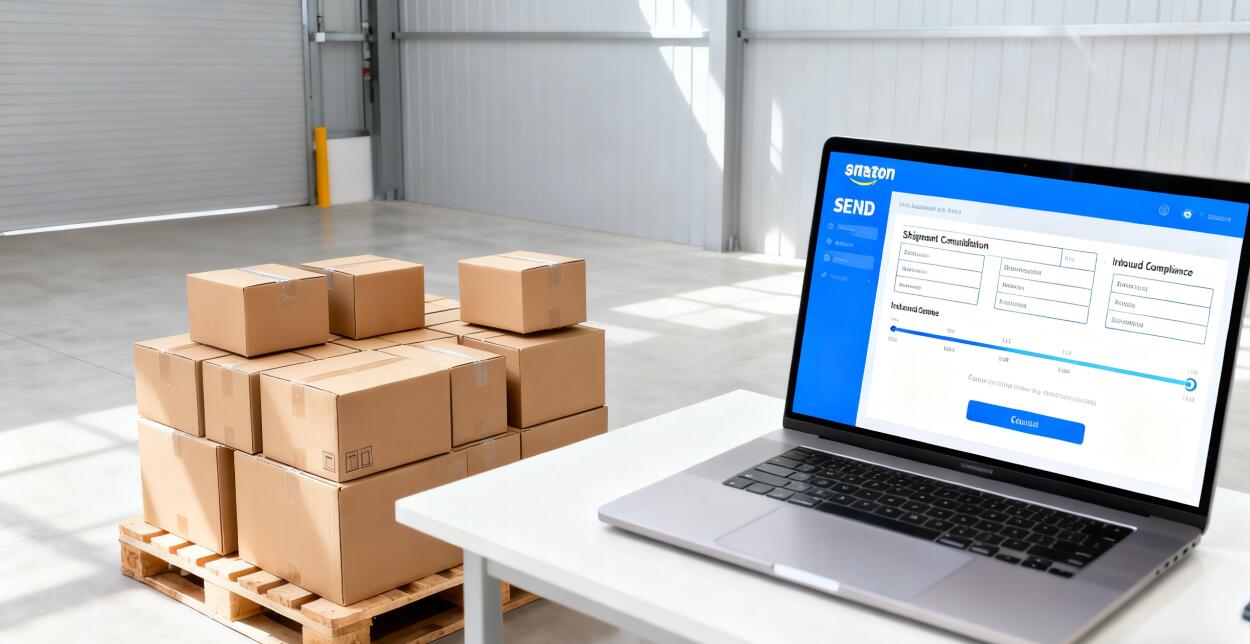Address
304 North Cardinal St.
Dorchester Center, MA 02124
Work Hours
Monday to Friday: 7AM - 7PM
Weekend: 10AM - 5PM

Peak Season Period (U.S.): Typically runs from early October through mid-January, representing both the most lucrative and the most operationally demanding time for Amazon sellers.
During this time, order volume skyrockets — but so do logistical challenges. Rising storage fees, warehouse capacity limits, and strict shipping windows can quickly eat into profits.
This guide will help you control costs, optimize inventory, and leverage Amazon logistics tools like AWD (Amazon Warehousing & Distribution), AGL (Amazon Global Logistics), and Amazon SEND to achieve a seamless, profitable peak season.
During Q4, Amazon applies Peak Season Fulfillment Charges (PSFC) to FBA orders shipped between October 15 and January 14.
For example:
A large standard-size item that normally costs $4.67 to fulfill may rise to $5.00 during the peak period.
Even if the order is placed before October 15, the ship-out date determines the applicable fee.
| Item Type | Standard Fee | Peak Season Fee | Difference |
|---|---|---|---|
| Small Standard (e.g., phone case) | $3.15 | $3.34 | +$0.19 |
| Large Standard (e.g., T-shirt) | $4.67 | $5.00 | +$0.33 |
| Oversize Items | varies | higher | more significant |
Tip: Always forecast Q4 fulfillment costs ahead of time — margin erosion during peak season is common.
Amazon’s Logistics Income / Shipping Calculator lets you model different shipping scenarios (by size, destination, weight, and mode) before committing to a fulfillment plan.
Build a Q4 cost forecast model incorporating historical data, carrier surcharges, and expected delays.
Consolidate multiple SKUs into a single LCL or FCL shipment to reduce per-unit freight costs. Avoid sending small partial shipments that trigger repeated handling and labeling fees.
Amazon SEND (Send to Amazon) simplifies inbound logistics by combining small parcels and pallets into a single optimized shipment.
Benefits include:
💡 Pro Tip: Many sellers using SEND report up to 15–20% cost savings on inbound freight compared to traditional 3PLs during peak season.
Amazon Global Logistics (AGL) provides an end-to-end solution for imports from China, Europe, and other regions directly into Amazon’s U.S. or EU network.
Key Advantages:
Example: Sellers using AGL often experience 2–5 days shorter customs processing and 8% lower overall costs during their first 60 days on the platform.
Case Study
A U.S. electronics brand consolidated three product SKUs into one LCL shipment via AGL → AWD → FBA, cutting shipping and handling costs by 18% and reducing lead times by five days.
Use predictive tools or AI-based forecasting (Helium 10, Jungle Scout, SoStocked, etc.) to project sales spikes.
Adopt a rolling forecast model, adjusting weekly based on real-time sales velocity and FBA restock limits.
Your IPI score determines FBA storage eligibility. Keep it high by:
Monitor IPI weekly and address problem SKUs early.
If restock limits threaten your Q4 plan, use Capacity Manager in Seller Central to request additional storage.
Sellers with strong performance histories are more likely to be approved for extra space.
Store bulk or slower-moving SKUs in Amazon Warehousing & Distribution (AWD) and replenish FBA automatically as inventory depletes.
This hybrid model ensures:
Before Q4, audit unsold or slow-moving items and act early:
For Black Friday or Cyber Monday readiness, send inventory no later than mid-October.
Build buffer time for customs, delays, and internal processing.
Amazon updates inbound cut-off dates each season. Missing delivery deadlines can result in suspended shipping privileges or delayed availability.
With AGL, you get end-to-end tracking and Amazon-managed customs, reducing transit uncertainty.
Mix air and sea freight to balance cost and urgency (e.g., airfreight 10–15% of stock for early availability).
Use dashboards or APIs to track shipment milestones (departed, cleared, received, checked in).
If a batch stalls in transit or customs, trigger contingency plans — backup carriers, alternate ports, or expedited shipping.
Amazon’s Supply Chain by Amazon integrates all major logistics tools into one ecosystem:
Benefits:
⚙️ Pro Tip: Sellers using full Supply Chain by Amazon integration report 10–30% lower logistics overheadand fewer inbound delays during peak season.
Lock in freight contracts early — ocean and air rates surge by up to 40% in Q4.
Track indices like the Freightos Baltic Index (FBX) or Drewry WCI for rate trends.
Maintain backup inventory (5–10%) and alternate transport routes.
Partner with at least one reliable 3PL for emergency fulfillment support.
| Metric | Frequency | What It Tells You |
|---|---|---|
| Actual vs. Planned Shipping Costs | Weekly | Tracks cost overages |
| Inbound Transit Time | Per shipment | Detects delay risks |
| AWD vs. FBA Inventory Ratio | Daily | Optimizes storage layout |
| IPI Trend | Weekly | Monitors storage efficiency |
| Aging Inventory % | Weekly | Triggers liquidation alerts |
Leverage tools like Power BI, Tableau, or Google Looker Studio to visualize these KPIs.
Peak season isn’t just about surviving — it’s about scaling profitably when competition is fiercest.
The sellers who plan early, forecast accurately, and leverage Amazon’s integrated logistics ecosystem will win the Q4 battle.
After the season ends, conduct a Q4 Post-Mortem:
By continuously refining your shipping, storage, and delivery processes, you’ll not only survive the peak season — you’ll dominate it.
Whether you’re a private-label brand, 3PL partner, or growing eCommerce business, now is the time to act.
Contact us today to learn how to reduce shipping fees, optimize inventory flow, and ensure on-time deliveries this holiday season.